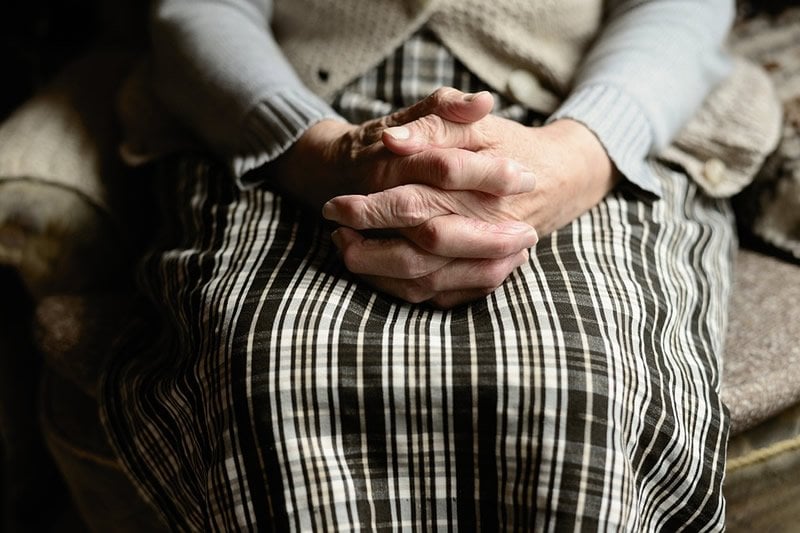Summary: Alterations associated with aging and cellular senescence may be linked to a decrease in cell proliferation, while cancer shifts towards increased cell division. The study challenges the traditional view that cancer risks increase as we age, finding the aging process may suppress the development of cancer.
Source: University of Liverpool
Aging is one of the biggest risk factor for cancer. However, the biological mechanisms behind this link are still unclear.
Each cell in the human body is specialised to carry out certain tasks and will only need to express certain genes. Gene expression is the process by which specific genes are activated to produce a required protein.
Gene expression analyses have been used to study cancer and aging, but only a few studies have investigated the relationship between gene expression changes in these two processes.
In an effort to better understand the biological mechanisms researchers from the University of Liverpool’s Integrative Genomics of aging Group, led by Dr Joao Pedro De Magalhaes, compared how genes differentially expressed with age and genes differentially expressed in cancer among nine human tissues.
Normally, a healthy cell can divide in a controlled manner. In contrast, senescent or ‘sleeping’ cells have lost their ability to divide. As we age, the number of senescent cells in our bodies increase, which then drive many age-related processes and diseases.
Genetic mutations triggered by things such as UV exposure can sometimes cause cells to replicate uncontrollably — and uncontrolled cell growth is cancer. Cells are often able to detect these mutations and in response go to sleep to stop them dividing.
The researchers found that in most of the tissues examined, aging and cancer gene expression ‘surprisingly’ changed in the opposite direction. These overlapping gene sets were related to several processes, mainly cell cycle and the immune system. Moreover, cellular senescence changed in the same direction as aging and in the opposite direction of cancer signatures.
The researchers believe the changes in aging and cellular senescence might relate to a decrease in cell proliferation, while cancer changes shift towards an increase in cell division.

Dr De Magalhaes, said: “One of the reasons our bodies have evolved to have senescent cells is to suppress cancers. But then it seems that senescent cells accumulate in aged human tissues and may contribute to aging and degeneration. Importantly, our work challenges the traditional view concerning the relationship between cancer and aging and suggests that aging processes may hinder cancer development. While mutations accumulate with age and are the main driver of cancer, aging tissues may hinder cell proliferation and consequently cancer. So you have these two opposite forces, mutations driving cancer and tissue degeneration hindering it. This may explain why at very advanced ages cancer incidence levels off and may even decline.”
However, an alternative explanation comes from evolutionary biology. First author Kasit Chatsirisupachai, explains: “And aged tissue might actually be a better environment for a rogue cancer cell to proliferate because the cancer cell will have an evolutionary advantage.”
Dr De Magalhaes: “Our results highlight the complex relationship between aging, cancer and cellular senescence and suggest that in most human tissues aging processes and senescence act in tandem while being detrimental to cancer. But more mechanistic studies are now needed.”
Source:
University of Liverpool
Media Contacts:
Simon Wood – University of Liverpool
Image Source:
The image is credited to University of Liverpool.
Original Research: Open access
“A Human Tissue-Specific Transcriptomic Analysis Reveals that aging Hinders Cancer and Boosts Cellular Senescence”. Kasit Chatsirisupachai, Daniel Palmer, Susana Ferreira, João Pedro de Magalhães.
Aging Cell doi:10.1111/acel.13041.
Abstract
A Human Tissue-Specific Transcriptomic Analysis Reveals that aging Hinders Cancer and Boosts Cellular Senescence
Aging is the biggest risk factor for cancer, but the mechanisms linking these two processes remain unclear. Using GTEx and TCGA data, we compared genes differentially expressed with age and genes differentially expressed in cancer among nine human tissues. In most tissues, aging and cancer gene expression pattern changed in the opposite direction. The exception was thyroid and uterus, where we found transcriptomic changes in the same direction in aging and in their corresponding cancers. The overlapping sets between genes differentially expressed with age and genes differentially expressed in cancer across tissues were enriched for several processes, mainly cell cycle and the immune system. Moreover, cellular senescence signatures, derived from a meta‐analysis, changed in the same direction as aging in human tissues and in the opposite direction of cancer signatures. Therefore, transcriptomic changes in aging and in cellular senescence might relate to a decrease in cell proliferation, while cancer transcriptomic changes shift toward enhanced cell division. Our results highlight the complex relationship between aging and cancer and suggest that, while in general aging processes might be opposite to cancer, the transcriptomic links between human aging and cancer are tissue‐specific.






